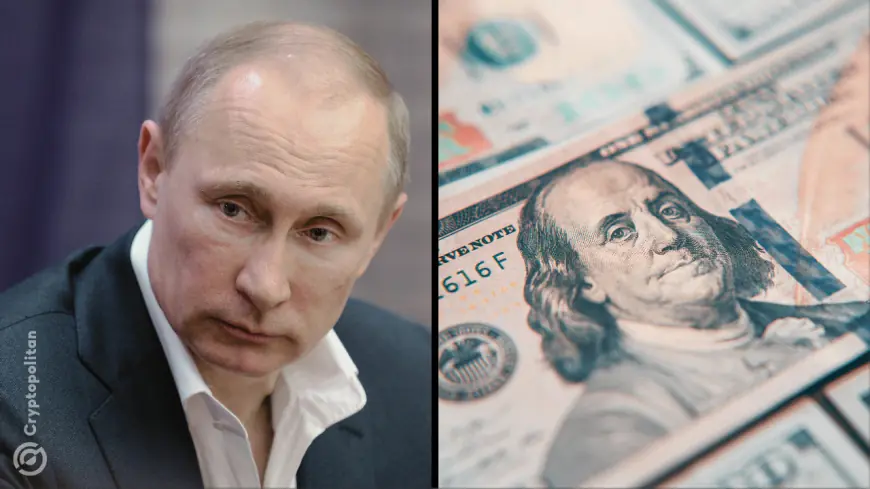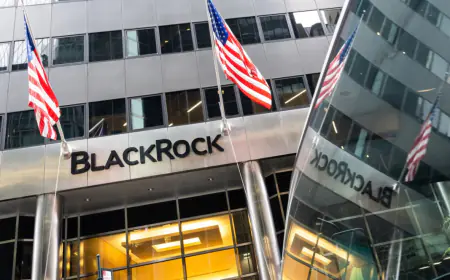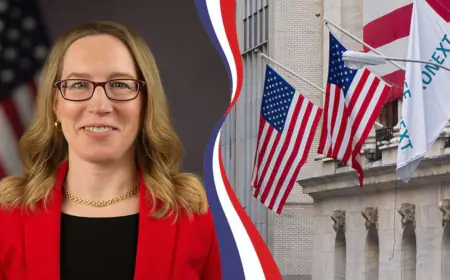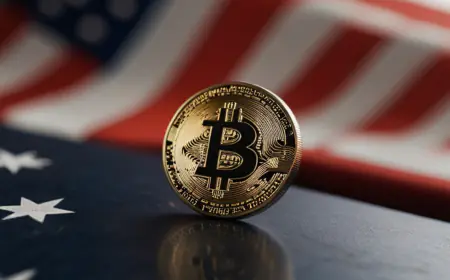Putin says Russia never ditched the US dollar – they were kicked out
Russia didn’t throw the US dollar out the window. According to President Vladimir Putin, the country got the boot. Speaking at the Valdai Discussion Club’s recent session, Putin made it clear that the idea of Russia choosing to reject the dollar was nothing but a myth. “We—Russia in any case—do not reject the dollar and […]

Russia didn’t throw the US dollar out the window. According to President Vladimir Putin, the country got the boot.
Speaking at the Valdai Discussion Club’s recent session, Putin made it clear that the idea of Russia choosing to reject the dollar was nothing but a myth. “We—Russia in any case—do not reject the dollar and do not intend to do this. We were merely denied of using the dollar as the payment instrument,” he said.
“In my opinion, this is very foolish from the side of US financial authorities because the entire power of the US to date rests on that, on the dollar.”
He sees the US banking on its own currency as a source of power—a power that they’re apparently willing to risk just to keep Russia out.
“We’re not struggling with the US currency,” Putin added. Instead, Russia is already thinking ahead, putting plans in place to develop new tools and systems to respond to changes in the global economy.
The BRICS and the push for a new system
Three weeks ago, Putin was hosting a major gathering—the BRICS Annual Summit 2024 in Kazan, Russia. And this time, he got to play the host after skipping last year’s summit in South Africa due to an arrest warrant issued by the International Criminal Court in The Hague.
October 22 saw world leaders, including India’s Narendra Modi and China’s Xi Jinping, gathering on the banks of the Volga River. Putin was visibly thrilled, not just about leading the summit on his own turf but also about the potential that BRICS now holds.
The group of five nations—Brazil, Russia, India, China, and South Africa— expanded to include five more member countries and a ton of partner countries (including long-term NATO member and US ally Turkey), further fueling its efforts to challenge the US-dominated financial system.
“Everyone understands that anyone may face US or other Western sanctions,” said Sergei Lavrov, Russia’s Foreign Minister, last month. To Lavrov, a new BRICS-based system would allow “economic operations without being dependent on those that decided to weaponize the dollar and the euro.”
The system, called “BRICS Bridge,” is set to be operational within a year. It’s designed for cross-border payments using digital platforms managed by each member country’s central bank. The interesting part? It might pull in ideas from another project, mBridge, which has the involvement of a Western financial giant: the Bank for International Settlements (BIS).
Headquartered in Switzerland, the BIS is often called the “central bank for central banks,” and mBridge’s involvement has raised eyebrows in the West.
For China, the BRICS plan is part of a long-term strategy. They see payments technology as a way to chip away at America’s financial power, not by direct conflict but through tech. This plan could make transactions quicker and cheaper, something that developing countries naturally find very appealing.
But in the US and Europe, officials are worried that this new system could turn into a tool for dodging sanctions. The idea that the BIS might unintentionally help BRICS build a “sanction-proof” payment system has left some Western policymakers frustrated.
Dollar dominance and the growing pushback
The US dollar has long been the star of the global financial show. Moving money internationally? Chances are, you’ll be relying on US banks at some point in the transaction chain. This central role lets the US monitor and control financial flows worldwide.
Scholars Henry Farrell and Abraham Newman coined terms for this power: “panopticon” and “choke-point” effects. These words capture how the US can watch over and, if needed, cut off access to funds.
It’s a reality that Russia felt hard when they invaded Ukraine in 2022. The West froze $282 billion in Russian assets abroad and disconnected Russian banks from SWIFT, the global payment messaging system used by 11,000 banks.
The US also issued a warning: any bank backing Russia’s war efforts would face “secondary sanctions.” This was a wake-up call, and central banks around the world started stockpiling gold.
Even more, countries began to consider ditching the dollar to sidestep potential sanctions. You can’t just halt entire economies because of one invasion. Society would collapse.
Right now, Russia has shifted to trading mostly in yuan, but they can’t get enough Chinese currency to cover all imports, so they’re even bartering.
Putin reunites with longtime friend Trump
While Putin’s taking aim at the dollar, his relationship with US President-elect Donald Trump has people talking. The Post recently reported that Trump called Putin after his astounding victory over Kamala Harris.
From Mar-a-Lago, Trump spoke with Putin and apparently urged him to keep the Ukraine conflict from escalating. Though Trump’s team didn’t confirm any details. Steven Cheung, Trump’s communications director, simply said, “We do not comment on private calls between President Trump and other world leaders.”
According to sources, Trump reminded Putin of America’s considerable military strength in Europe. The two reportedly discussed their plans for Ukraine, with Trump expressing his desire to continue these talks. The call, as described, focused on the need to end the fighting soon.
Trump and Putin’s relationship has always been complex and controversial. The two men have exchanged compliments for years, building a public perception of mutual respect. Trump has praised Putin as “smart” and “genius,” even calling his moves in Ukraine “pretty smart.”
During his political career, Trump has frequently admired Putin’s leadership style. Back in 2007, Trump said, “Look at Putin—what he’s doing with Russia—this guy has done…he’s doing a great job rebuilding the image of Russia.” In July 2015, Trump said with a shrug, “I think I’d get along very well with Vladimir Putin. I just think so.”
Putin has returned the praise too. In December of the same year, he called Trump “talented” and “the absolute leader of the presidential race.” The US president responded that it was “a great honor to be so nicely complimented by a man so highly respected.”
Their shared interests have fueled speculation about a deeper connection. Both men are known for their nationalist agendas, their skepticism of traditional alliances, and a disdain for the so-called establishment. Trump’s “drain the swamp” rhetoric mirrors Putin’s opposition to Western elites.
And while Trump has openly questioned NATO’s relevance, Putin would love nothing more than to see a weakened NATO.
But there’s a darker side to this friendship. Their relationship has been at the center of many political controversies. From Russia’s alleged interference in the 2016 US election to Trump’s approach to Ukraine, the connection between these two leaders has drawn scrutiny.
In 2018, during a summit in Helsinki, Trump publicly sided with Putin over US intelligence agencies’ claims of election interference, starting an outrage.
This friendship has raised questions about US foreign policy. Trump’s impeachment over withholding military aid to Ukraine was seen by some as an alignment with Russian interests.
And then there’s the business angle. Trump has had various business dealings in Russia, including attempts to build a Trump Tower in Moscow. His hosting of the Miss Universe pageant in Moscow in 2013 further fueled speculation about his ties to Russian elites.
Putin, meanwhile, as we reported before, has said that he no longer wishes to dethrone the dollar. Clearly, the two men admire each other a great deal.
Trump’s approach to the Ukraine situation has been criticized by Democrats and even some Republicans. He has repeatedly questioned the billions that Washington has sent to support Kyiv, saying that he’s more interested in a quick resolution than in funding a prolonged conflict.
Just days before the call, Trump had spoken with Ukrainian President Volodymyr Zelensky. Joining him on that call was none other than Elon Musk, the tech billionaire who has shown a keen interest in Ukraine. Meanwhile, Biden’s team isn’t slowing down its support for Ukraine.
They’re committed to sending as much aid as possible before Trump’s inauguration on January 20. National Security Advisor Jake Sullivan made it clear that the goal is to ensure Ukraine’s strength, both on the battlefield and at the negotiation table. The US still has $6 billion left in funds for Ukraine.
What's Your Reaction?








































































































